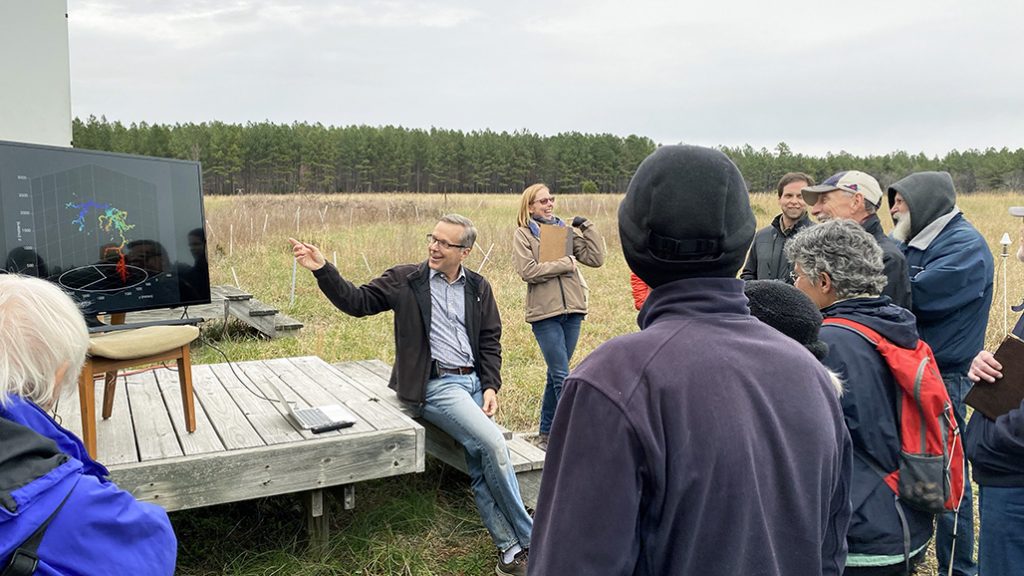“Lightning is like a dangerous animal that wants to go places. And you can’t stop it,” smiled Steve Cummer, Ph.D. as he gestured to the colorful image on the widescreen TV he’d set up outside his research trailer in an open field in Duke Forest.
Cummer, the William H. Younger Professor of electrical and computer engineering at Duke, is accustomed to lecturing in front of the students he teaches or his peers at conferences. But on this day, he was showing spectacular videos of lightning to curious members of the public who were given exclusive access to his research site on Eubanks Road in Chapel Hill, about 8 miles west of campus.

More than two dozen members of the community had signed up for a tour of research projects in the Blackwood Division of Duke Forest (which recently expanded), a research-only area that is not normally open to the public. Cummer’s research site was the last stop of the afternoon research tour. The tour also covered native trees, moths and geological features of the Blackwood Division with biologist and ecologist Steve Hall, and air quality monitoring and remote sensing studies with John Walker and Dave Williams, from the U.S. Environmental Protection Agency.

Cummer’s research on lightning and sprites (electrical discharges associated with lightning that occur above thunderstorm clouds) sparked a lively question and answer session about everything from hurricanes to how to survive if you’re caught in a lightning storm. (Contrary to popular belief, crouching where you are is probably not the safest solution, he said. A car is a great hiding spot as long as you don’t touch anything made of metal.)
Cummer kept his tone fun and casual, like a live science television host, perched on the steps of his research trailer, referring to some of the scientific equipment spread out across the field as “salad bowls,” “pizza pans” and “lunar landers,” given their odd shapes. But the research he talked about was serious. Lightning is big business because it can cause billions of dollars in damage and insurance claims every year.

Surprisingly little is known about lightning, not even how it is first formed. “There are a shocking number of things,” he said, pausing to let his pun sink in, “that we really don’t understand about how lightning works. Starting with the very beginning, nobody knows exactly how it starts. Like, really the physics of that.” But Cummer loves his research and has made some advances in this field (like devising more precise sensor systems), “When you’re the first person to understand something and you haven’t written about it yet or told anyone about it… that’s the best feeling.”
The Duke Forest hosted 49 research projects last year, which —with less than half of the projects reporting—represented over a million dollars of investment in Duke Forest-based work.
“The Duke Forest is more than just a place to walk and to jog. It’s an outdoor classroom. It’s a living laboratory. It’s where faculty and teachers and students of all ages come to learn and explore,” explained Sara Childs, Duke Forest director.
The Duke Forest offers their research tour every year. Members of the public can sign up for the email newsletter to be notified about future events.

Post by Véronique Koch
